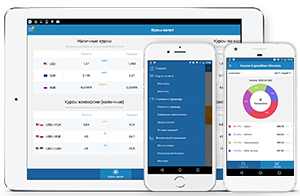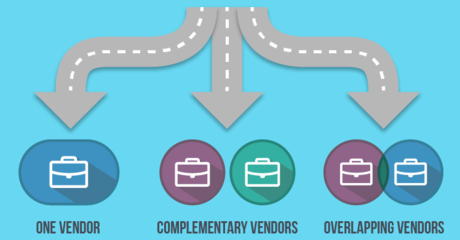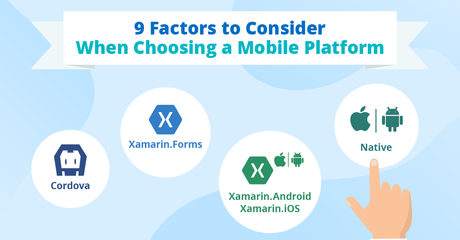Mobile apps are all peculiar in their own way: they differ in complexity, functionality and intended use. Because of this diversity, there’s no universal approach to mobile app development. Yet, there’re general steps that are common for various projects and describe app development process on the whole.
In this article, we’ll guide you through these mobile app development steps for you to know what to do after a great app idea has popped up in your head.

1. Define the specifics
To make your app idea tangible, you need to define it in technical terms. That is, you have to put the app concept into certain categories based on three main factors:
-
Target platform
Decide whether you want to cater to the iOS or Android audience. If you want to hit both platforms, set your priorities and choose the market you want to join first.
-
Development type
If you’ve chosen a single platform in the previous question, you should most likely go native. If you consider catering to both markets, look into cross-platform and hybrid opportunities.
-
Monetization model
Think about the way you want your app to bring profit. You can make your users pay to install the app, gain money from advertising or from in-app purchases. Until recently, the third option was common for Android apps only, but in-app micro transactions have proved to be effective, and now they drive many popular iOS apps too.
Whether you make these decisions on your own or with the help of mobile consultants, once you have your answers, move on with confidence.
2. Get your bearings
At the second step of mobile app development process, check out your future competitors by looking into the apps based on concepts resembling yours. No implementation can be exactly what you were thinking about, but most likely, very similar apps already exist. Don’t let that discourage you; instead, take advantage of it.
Scrutinize similar apps in order to better understand what you want (and don’t want) your app to be. Pay attention to the users’ feedback: what do they expect from an app like yours? What are they unsatisfied with? What improvements do they suggest? With these insights, your app can absorb all the best that is already present on the market and have a jump-start by offering a thought-out solution.
3. Design your vision
Before you turn to a professional UI/UX designer or application developers, try to recreate your own vision of the future app, since you’ll be asked for this kind of input anyway. You can do it on paper, by drawing your app’s main frames and marking essential information about button actions and animations.
But for better convenience and effectivity, you can use a simple prototype tool like Justinmind. It doesn’t require any code knowledge; all you need to do is drag and drop pre-made UI elements on the virtual mock-up model of your app. Since it’s also possible to assign actions to the navigation elements and adjust transitions, you can even interact with a prototype of your app and see it live.
4. Search for developers
Finding a mobile team to implement your concept is the most important step in the entire app development process. To give your app into the right hands, conduct a thorough investigation of your potential business partner. Especially, take into consideration their:
- Mobile development experience (in general)
- Technology skills (those relevant to your project)
- Industry focus
- Customer testimonials
- Case studies and demos.
Don’t make a snap decision and take your time to approach 5-10 vendors.
5. Guide and Cooperate
Having found and hired a vendor, you don’t relieve yourself from responsibility. If you want to get a great app in the end, you should continue working on the application side by side with the developers.
It’s important that you agree upon the cooperation model as early as possible. Do you want to participate in the project as little as possible and get a product for a fixed price, or would you prefer to keep up with the progress, change your requirements on the go and pay for any additional changes you’ll request?
In the second case, discuss the amount, form and frequency of your communication with the developers to make sure you both understand how much you are going to be involved. Be prepared to devote some of your time to providing elaborate feedbacks during UI/UX design, development and testing phases. If you’re a business owner, consider assigning a project sponsor to manage everything on your behalf.
6. Get the app published
Unless you develop an app, which you need to integrate with the in-house systems, the next step of the app development process is publishing the app on a store. Since app stores have specific quality standards and security requirements, you’ll be on the safe side if you delegate publishing to your developers. The store’s approval for publishing the app will be the last quality assurance test they have to pass.
7. Further maintenance
You can’t ever say your app is ‘complete,’ not even after its publication. There’s always room for growth and improvement, so you’ll probably want your app to have regular maintenance and updates. By constantly working on your app together with the development team, you’ll be able to keep its content and design relevant as the time goes by. Depending on the type of your app, you can also need a permanent tech support team to promptly see any technical problems and fix them.
Summary
Although each project is unique, mobile app development process always consists of a series of steps described above. To bring your app from the state of a mere concept to a viable product, you have to decide on its technical characteristics, analyze the market, convey your design and UI architecture visions and, finally, closely cooperate with developers during the implementation, testing, and maintenance phases. To have a successful app, follow each of the steps carefully.

Dealing with a mobile-related challenge? Take advantage of the diverse and deep knowledge of our mobile development team.



